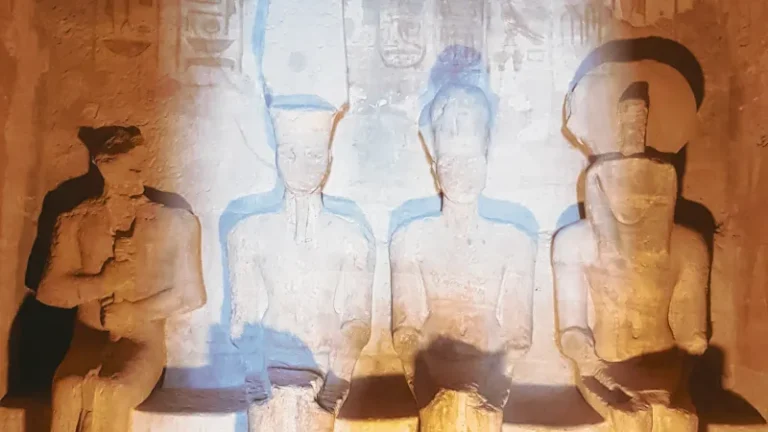There are many reasons to visit Ethiopia, and it has long been on my travel bucket list. However, when I tell people of this, they often seem surprised. It could be that they are picturing images from the 1980s of starving African children and Live Aid concerts with Bob Geldolf shouting: “give us your f***ing money!”.
So, why go?
Ethiopia is a country with a history unmatched by anywhere on earth! It defies stereotypes, overflows with natural beauty, scenic landscapes and diverse and colourful culture. As well as that, it also has one of the world’s fastest-growing economies, and the capital Addis Ababa is a thriving cosmopolitan city and the hub of economic, social and political activity. That being said, it is still a place where authentic Ethiopian culture is on full display. Though the country is still a relatively less tourist trodden destination, its popularity is rising year on year.
Here are eight reasons why Ethiopia should be on your travel bucket list.

1. The Queen of Sheba and the Ark of the Covenant
The union of King Solomon and the Queen of Sheba (Queen Makeda of Ethiopia) is mentioned only very briefly in the King James Bible. However, the story is more widely documented, in the Kebra Nagast (“The Glory of the Kings”), a sacred text to Ethiopian Christians and Rastafarians.
In addition to the Kebra Nagast chronicling the relationship between the King and Queen, it further tells that they bore a son, Menelik I, and how the Ark of the Covenant came to Ethiopia with him. The Kebra Nagast states that Menelik hid the Ark in the ancient rural town of Aksum (Axum), where the Queen of Sheba’s palace once stood, and ruins remain. The original Ark of the Covenant is believed to be held in a small chapel at the Church of St. Mary of Zion in Aksum.
Aksum’s archaeological sites, which also include the Obelisk of Axum, are listed on the UNESCO World Heritage site.
2. Ethiopian New Year
Differing from the Gregorian calendar, which most of the world abides by today, the Ethiopian calendar has 13 months in a year, 12 of which have 30 days. Therefore, Ethiopia celebrates important holidays on days different to the rest of the world. For example, the country celebrates New Year (Enkutatash) on 11 September (12th during a leap-year). It is a very festive occasion and another reason why Ethiopia is a unique place to visit.
Though we previously followed the Julian calendar (proposed by Julius Caesar), the Gregorian calendar was later adopted when Pope Gregory XIII introduced it, naming it after himself. Ethiopia stands apart as it did not accept the Gregorian calendar like the rest of the world. This may be because Ethiopia, unlike the rest of Africa, was never colonized. (Liberia was also never officially colonized but was effectively an American colony).
The Ethiopian calendar and Julian calendar are similar, but as the two calendars calculate the birth year of Jesus Christ differently, the Ethiopian calendar is, therefore, seven to eight years behind the Gregorian calendar that we use today.

3. Tribes of the Lower Omo Valley
The Lower Omo Valley region has been a UNESCO World Heritage Site since the unearthing of human remains in the area, dating back nearly 2.5 million years. A testament as to why Ethiopia is known as “the cradle of civilisation”.
The tribes of the Lower Omo Valley, based in southern Ethiopia, consist of eight indigenous tribes. These tribes, a population of approximately 200,000, are some of the world’s last unchanged cultural groups. They have a unique culture and way of life. Most tribes differ in language, clothing, food, and traditions, all of which have developed over eons.
The tribes of the Lower Omo Valley rely on nature and lead lives unaffected by the outside world. There’s no doubt that one of the main reasons to visit Ethiopia is its unique and unequalled history, and a visit to the area is a great way to witness and explore the oldest culture in the world.

4. Simien Mountains
Often referred to as “the roof of Africa”, the Simien Mountains National Park in northern Ethiopia is famous for its dramatic highland scenery, jagged peaks, unique wildlife and standout views. It is also one of the most dramatic mountain landscapes in Africa.
The park is home to some of the continents most scarce flora and fauna and rare animal species such as the Gelada baboon, the Simien fox and the Walia ibex. These factors have contributed to the area becoming a UNESCO natural World Heritage Site.
The landscape is shaped by nature, and the jagged mountain peaks (ambas), created by erosion over millions of years, frequently serve as a backdrop for tourists.
5. Blue Nile Falls
The Blue Nile Falls is one of Ethiopia’s top natural attractions and one of the greatest falls on the African continent. Its location on the Ethiopian plateau passes the Blue Nile River, which contributes up to 80% of the world’s longest river’s (The Nile) flow.
Clouds of mist emanate as the falls cascade from a height of some 150ft giving the illusion of smoke coming off the water as it crashes to the surface. For this reason, it is known locally as “Tis Abay”, which translates to “Great Smoke”. The Blue Nile Falls is particularly dramatic during the rainy season from June to early September.

6. The Churches of Lalibela
Lalibela is one of Ethiopia’s holiest cities, second only to Axum, and the population is almost completely Ethiopian Orthodox Christian. Particularly, the area is famed for its rock-cut orthodox churches and is a significant place of pilgrimage for Ethiopian Orthodox Christians.
The Churches of Lalibela is a monolithic complex of eleven rock-hewn churches believed to have been commissioned by King Lalibela in the 13th century to recreate the holy city of Jerusalem. Seven times a day, seven days a week, worshippers still gather here, chanting prayers in unison.
The impressive religious site was one of the first landmarks to receive UNESCO-listed status and is a skilful example of the country’s rich heritage.
7. The Food
Ethiopian restaurants and street food pop-ups have gained popularity over recent years, but the cuisine is still relatively underrated.
Ethiopian cuisine consists of a diverse and flavourful mixture of spiced meats and curries, lentils and chickpea dishes. Meals are served on and scooped up by a large, spongey soughdough flatbread called “injera” and served on a platter to encourage dining together.
Apart from tasting good, Ethiopian food is also healthy. Injera, a staple in Ethiopian cuisine, is made from teff, an ancient grain native to Ethiopia and viewed as a “super grain,” similar to quinoa and spelt. It is high in protein, calcium and iron, and is gluten-free.

8. Danakil Depression
Finally, on the list of reasons to visit Ethiopia is one of the hottest and inhospitable places on earth. And, in addition to being one of the hottest places on earth, at 100 metres below sea level, it is also one of the lowest.
The Danakil Depression lies at the triple junction of three tectonic plates. The depression has developed as a result of Africa and Asia moving apart, causing rifting and volcanic activity. The area, which was once part of the Red Sea, is located in the Afar Region of northeast Ethiopia, near the border with Eritrea. It is approximately 124 miles by 31 miles.
All water entering Danakil evaporates, and no streams flow out from its extreme environment, which looks like another world.
The floor of the Danakil Depression is composed mainly of basaltic lava, salt deposits, sulphur springs, lakes and endless orange tones and is an outlandish sight. However, despite its extreme conditions, it is still possible to visit. In fact, the area has been continuously occupied by a distinct ethnic group for more than 2000 years.
These are just some reasons to visit Ethiopia. Is it on your travel bucket list? What would you add?












